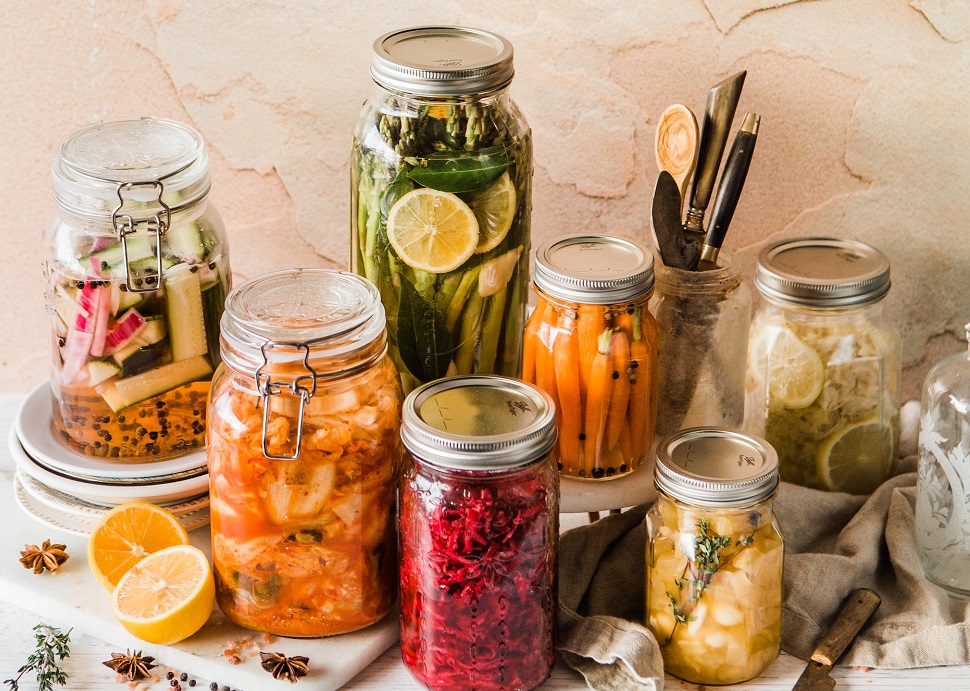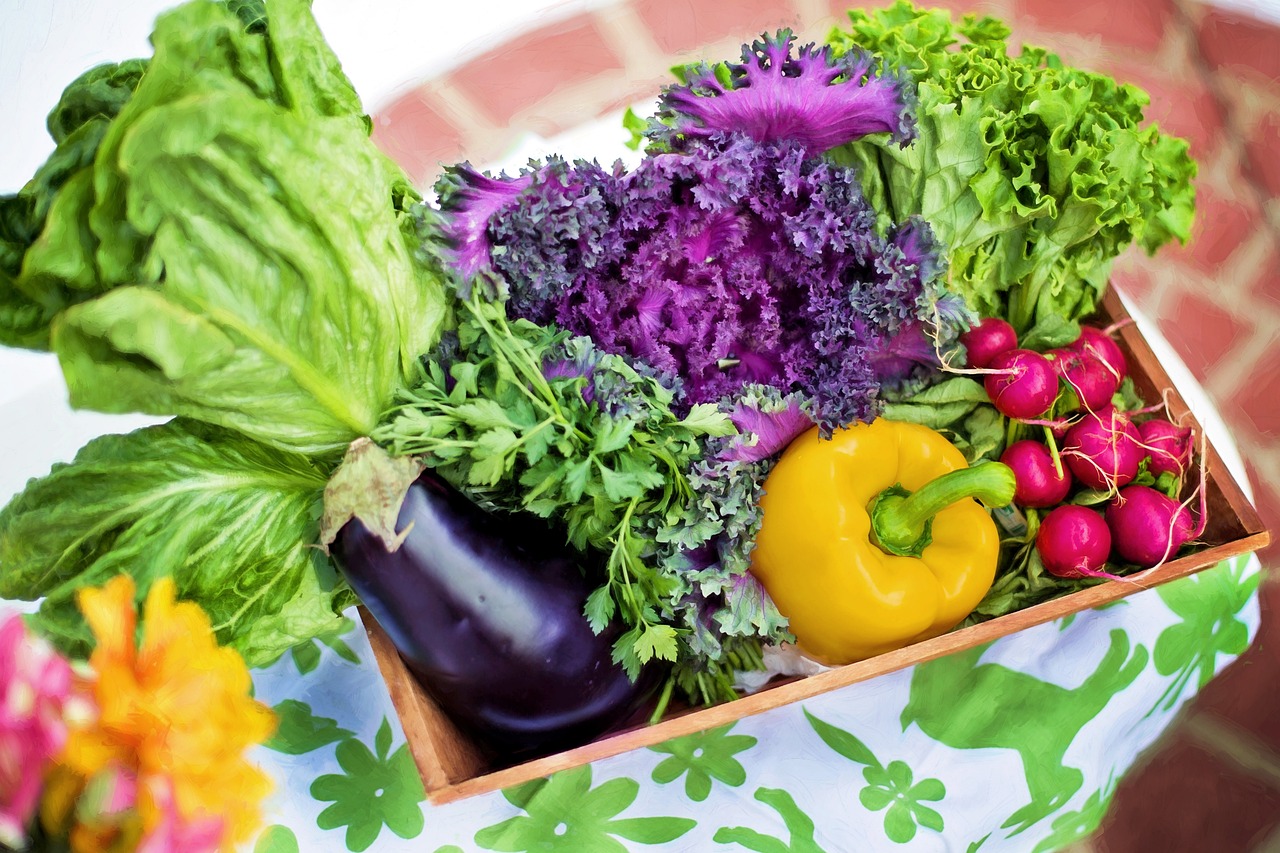
Benefits of Fermented Vegetables
Fermented vegetables have become unsung heroes in the realm of nutrition and wellness, providing a wealth of advantages for our palates and health. A classic technique for preserving vegetables, fermentation also adds a symphony of aromas and sensations and boosts their nutritional value. We’ll delve into the intriguing world of fermented vegetables in this blog post, highlighting all their health advantages and offering you some delicious recipes to get you started.
Understanding the Biochemistry of Fermentation
Natural processes like fermentation convert food’s carbohydrates and starches into simpler substances like organic acids and alcohol. These microorganisms include bacteria, yeast, and molds. This alteration gives the food distinct aromas and textures, in addition to serving as a preservation technique. When applied to vegetables, the procedure yields a wealth of probiotics, beneficial enzymes, vitamins, and minerals.
While there appears to be some discussion as to when the fermentation of vegetables started, many believe that it was in 300 B.C. People in China began fermenting vegetables in vinegar. Many of us consume fermented food products and might not even realize it. For instance, cocoa and coffee beans are fermented to increase their flavor and smell. Also, all leavened breads utilize fermentation when the yeast or bacteria interact with carbon dioxide to make the bread rise. For vegetables, the most commonly fermented types are olives, sauerkraut, kimchi, and cucumbers.
However, you can ferment much more, such as carrots, green beans, broccoli, and cauliflower. Truly, the options are endless and a bit addictive once you try.
What Are the Benefits of Fermented Vegetables?
The impact of fermented vegetables varies from person to person, but the most common benefits are detailed below.
Gut Health
Probiotics, or good bacteria, are abundant in fermented vegetables and help maintain a healthy gut microbiota. Better nutrient absorption and digestion are both associated with healthy gut flora.
Frequent consumption of fermented vegetables can help maintain a more contented and healthier digestive tract.
Nutrient Boost
Fermentation increases the nutrients’ bioavailability in plants. For example, during fermentation, the concentrations of some vitamins, including the B vitamins, rise. As a result, your body will be able to absorb and use these nutrients more efficiently, promoting general health and well-being.
Digestive Enzymes
Your body can more easily digest and absorb nutrients when you consume fermented vegetables because they contain enzymes that help break down complicated molecules. These enzymes can guarantee that your body receives the most nutritious value from the foods you eat and help ease digestive problems.
Immune System Support
The probiotics in fermented vegetables are essential for boosting the immune system. This is thanks, in part, to the gut health advantages listed above. That’s right. Your gut contains a large number of immune cells, and maintaining a balance of good bacteria helps support immune system health and aids in the body’s defense against harmful microorganisms.
Mood and Mental Health
New research points to a direct link between mental health and gut health. The gut and the brain communicate with each other in a two-way manner through the gut-brain axis, and eating fermented foods can help keep your gut bacteria healthy, which in turn can improve your mood and cognitive abilities.
Knowing these benefits, it’s easy to see why more people are adding fermented vegetables to their daily food intake. Still, it might be overwhelming to know where to start.
What Steps Are Involved in Fermenting Vegetables?
Fermenting vegetables not only makes the food last longer but also makes it healthier by encouraging the growth of good bacteria. In return, you profit from the benefits mentioned above. To ferment vegetables, you can follow the steps below:
Get the tools and ingredients you need.
- Pick any vegetables you want, like cabbage, carrots, or cauliflower
- Sea salt or kosher salt
- Water
- Herbs and spices (optional, for taste)
- Container with lid
- Glass or ceramic weight to keep the vegetables submerged
Directions
Prepare the Vegetables: Clean the vegetables and cut them evenly. This ensures consistent fermentation.
Prepare the Brine: Combine the salt and water using about two to three tablespoons of salt to one quart of water. Make sure the salt is completely mixed in to ensure an even coating.
Put the Vegetables in the Container: Put the vegetables in the container in layers, making sure there are no air pockets between them. At this point, you can add herbs or spices if you’d like, between the layers. Some popular choices are garlic or dill. Be sure not to fill it to the top to leave room for the brine and the weight.
Add the Brine: Once the vegetables are layered into the container, add the brine and the weight to keep the vegetables in the brine and to stop mold from growing. This also creates an oxygen-free space for fermenting to happen.
Be Patient: Put the container somewhere cool and dark to let the vegetables ferment. The length of time varies and depends on the temperature in the space as well as your personal tastes. Typically, the fermentation process takes anywhere from one to four weeks.
Check the Progress: Check the vegetables every so often for signs of fermentation, like popping, a sour smell, and a sour taste. You can easily do this by tasting a small piece to see if it has been fermented to the right level.
Place the Container in the Fridge: Once you’re happy with how the vegetables have fermented, put the container in the fridge to slow down the process. This also helps the vegetables stay fresh for a longer time.
What Can You Do With Fermented Vegetables?
You can simply eat the vegetables as is, or you can find recipes for things like Fermented Pepper Mash or Fermented Ketchup online. Our team can also assist you in your fermenting journey, providing you with space (locally) to not only grow your vegetables but also with educational resources.
Keep in mind that fermentation is an art that may need some trial and error to get the right taste and structure. The good news is that you don’t have to start the process on your own. You can begin by joining our upcoming Fermenting Vegetables: Healthy and Delicious class at Stoney Creek Farm.
Take Advantage of the Benefits of Fermentation Today
Working with fermented vegetables opens a world of health benefits and adds interest to your cooking adventures. The benefits of including fermented vegetables in your diet are numerous, ranging from improved nutrient absorption and gastrointestinal health to immunity enhancement.
You can create tasty and nourishing additions to your meals by bringing the magic of fermentation into your kitchen.


